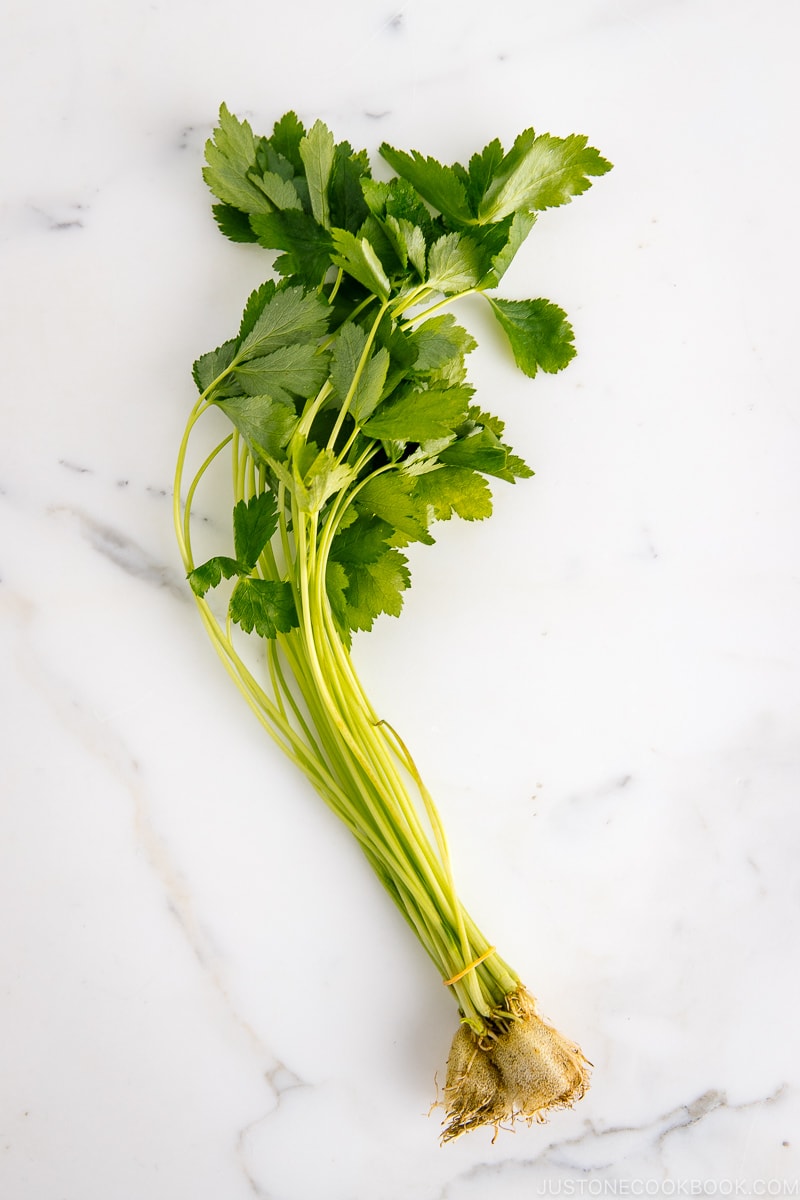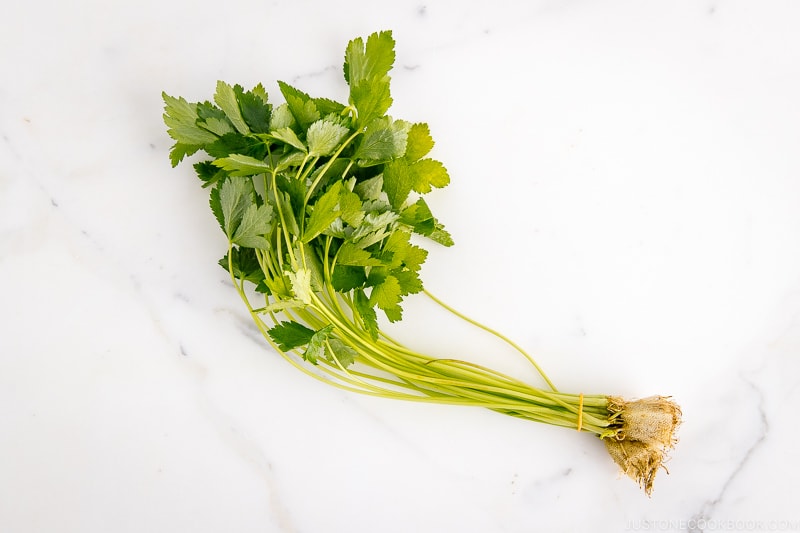Mitsuba, or Japanese wild parsley, has a celery-like flavor with a slightly bitter taste. Because of this refreshing, unique flavor, it’s used in soups, donburi, sushi rolls, omelets, and chawanmushi.

Mitsuba (三つ葉) from the family Apiaceae (carrot family) is a Japanese herb that resembles Italian parsley. It has many culinary uses, such as a garnish in miso soup, rice bowls, noodle dishes, chawanmushi, an ingredient in futomaki, or folded into tamagoyaki. An herb native to northern China, Korea, and Japan, all parts of the plant are edible, from the root, stem, leaves, and seeds.
It’s also known as wild Japanese parsley, Japanese honewort, white chervil, and stone parsley.
What is Mitsuba?
Literally “three leaves,” mitsuba (Cryptotaenia japonica) has a thin light green stalk and trefoil leaves. It resembles flat-leaf parsley and has a crispy texture and a refreshing scent. It’s used to add color and aroma to many Japanese dishes.
In Japanese food culture, mitsuba is considered good luck. You’ll see it in ozoni (Japanese New Year soup), osuimono (clear broth, often served at Hinamatsuri), wedding banquets, and other celebratory occasions. Mitsuba tied in knots are considered the most auspicious, meaning to establish a relationship.
What Does It Taste Like
It has a clean and refreshing flavor that’s slightly bitter. Some describe it as a cross of parsley, celery leaves, shiso, sorrel, and cilantro.
How To Use
As mitsuba becomes bitter and loses its delicate flavor when cooked for too long, use it as a garnish. Chop up the stems and leaves and sprinkle them over various Japanese dishes.
Where to Buy
Usually, it’s sold in small bundles with their roots attached. Find it at Asian and Japanese grocery stores.
You can also grow the plant in your garden from seeds or seedlings. It prefers partial shade as the leaves turn yellow, and the flavor becomes bitter with too much sun exposure.

How To Choose The Best
Like any herbs, choose mitsuba that look fresh and bright-colored, and avoid those that look limp or wilted.
How To Store
Keep it fresh by wrapping the bunch in a damp paper towel or put it in a jar of water like a flower bouquet. Store in the refrigerator until use.
Recipes Using Mitsuba







Substitutions
When using mitsuba as a garnish, use other green herbs such as cilantro, scallions, or green onion. Use chopped arugula or watercress if you’re seeking a refreshing and slightly bitter flavor.
Health Benefits
Traditional Chinese and Japanese medicine use mitsuba as a tonic to strengthen the body, remove toxins, reduce inflammation, stimulate blood flow, control blood pressure, and help remove phlegm. It’s also known for its stress-relief properties. Nutritional content contains vitamins A, B1, B2, B9, C, carotenoids, and iron.
If you’re allergic to celery or parsley, you may also want to avoid mitsuba.
Wish to learn more about Japanese cooking? Sign up for our free newsletter to receive cooking tips & recipe updates! And stay in touch with me on Facebook, Pinterest, YouTube, and Instagram.

